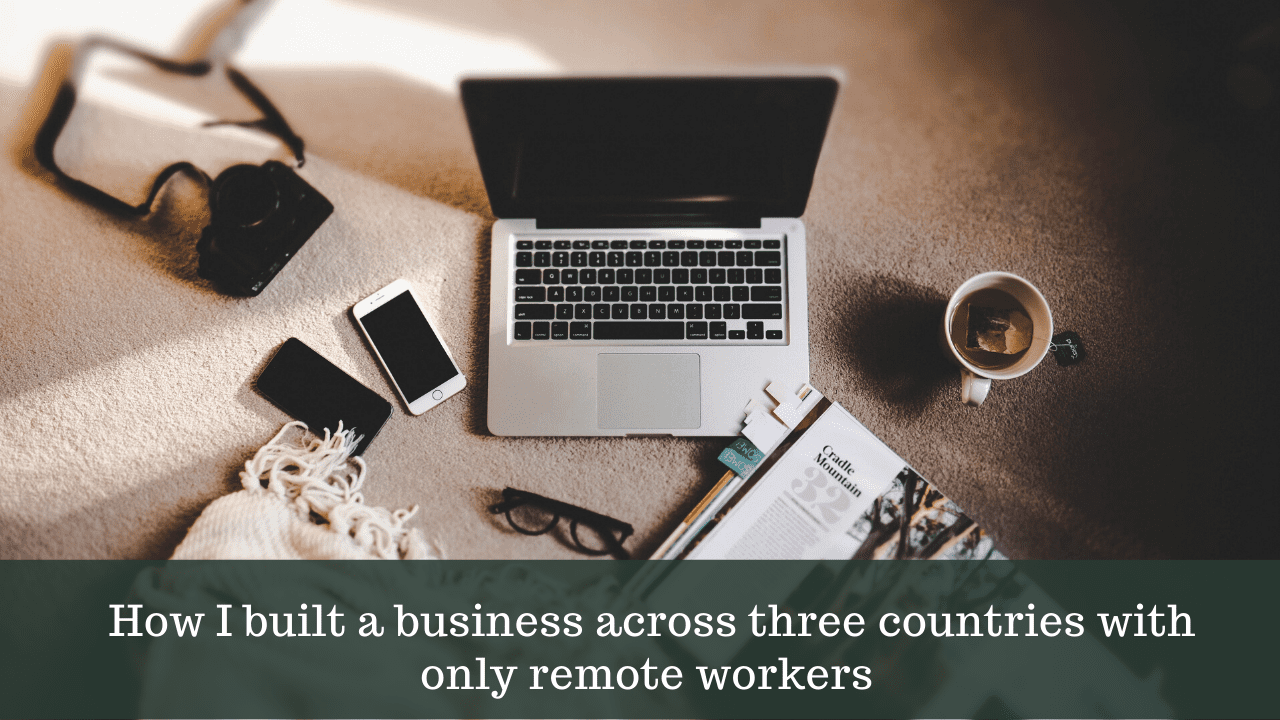When I first decided to start my own business – a PR agency – I envisioned a sleek office decorated in steam-punk fashion with a huge reception to give people a sense of wonder whenever they came over for a meeting. I worked out the budget and put together a hiring plan that included a receptionist and a strong operations team to manage our plethora of clients.
Fast-forward two years into our journey and we do not have a physical office, but we have a strong list of exciting clients spread across three countries– Singapore, Malaysia, and Indonesia.
So here’s what happened. Firstly, commuting back and forth in any of the three aforementioned countries was a struggle for everyone. Secondly, when we first started, budgets made it very hard to fit in office rental as well as comparable salaries in Singapore, which is our home market.
Thinking back to the beginning, I had one of two options, get a loan from a bank or beg for money from my friends, or postpone my dream until I won the lottery, so I could get my dream office. Instead, I decided to wing it, and start my business and build a company of remote workers.
So here’s a summarised version of how we grew from two people who only ever communicated via email, to a team of over 27 full-time and contract staff across eight countries servicing clients based mainly in three markets.
Read more about how PR might be the best way to engage Gen-Z
Remote does not mean cheap
There is a huge misconception in the market that remote means cheap labour with questionable quality. When I began my journey at SYNC, I sought out experienced freelancers and content specialists who I knew and trusted to join the team, offering them market-comparable pay with the convenience of being able to set their own timetable.
My payroll resembled a traditional PR agency, but I was able to remove the usual overheads and only invest in labour costs and some technology tools to help manage the team.
So while my overall burn rate was much lower, I did not pay less for talent. This really matters if you want to build a strong team that is able to maintain productivity and professionalism while working remotely.
Communication is key and even communication companies get it wrong

It might have been a lack of experience or overconfidence, but the first few months of running the business were quite a challenge. Communication, which is at the core of my profession, was also a challenge when you are used to just turning around to your colleague for a quick chat or popping into a meeting room for a 15-minute brainstorm.
I had to adapt from years of working within a team, to a team of strong-willed individuals who did not quite understand what I was trying to achieve with my business. Trying to instil a sense of pride and belonging when you never see your team was another challenge – more so when you are trying to disrupt or change a traditional business such as public relations.
Something had to change. So I changed because it was the best thing for the company.
From being a solitary and focused worker, I built a culture of sharing and openness that is pushed from top-down. If something goes wrong and it is my fault, I own up to it and my team provides feedback on my performance for everyone to see.
I took a team of social introverts and told them that we were going to have to meet up every week. Now I meet my Singapore team at least once a week and I speak to them more than I do my own friends.
I see my Malaysia and Indonesia teams about once a month and they know they can reach me at any time – so I am fielding questions and getting updates seven days a week.
While it is tough work, creating a real culture in a remotely-run business means you have to invest your time and become part of the fabric of the actual business.
Remote workers are not all beach-lounging hipsters
I class myself as a remote worker, but go for meetings regularly and dress (relatively) formally when meeting clients and partners. My team follows suit (most of the time) and we try to maintain a public-facing level of professionalism.
Most of my remote team of contractors and full-timers are your typical office worker with the exception that they get to wake up a bit later than normal, save time and money on commuting and are able to actually be home for deliveries on a weekday morning should the need arise.
So, I do not get to spend a lot of time on the beach, even though I love it.
We are not the only ones doing it

Remote work has become more popular as employees are starting to realise that it is a viable job option, while at the same time businesses are fast realising that talent does not necessarily reside in a certain market or location.
In fact, according to a study called 2018 Global State of Remote Work, of the total companies and employees polled, more than half (56 per cent) of companies offer both remote and in-office options, and employees who work remotely at least once a month are 24 per cent happier than their work-from-office counterparts.
We also work with two companies that were entirely built on remote staff – Tech Collective Southeast Asia, a technology publication and Travel Wanderlust, a travel resource site. Both have built a core team of remote workers that use a pool of talented content developers and journalists across the world.
There are options for everyone
Another interesting trend I have noticed is the availability of a growing number of resources and platforms for remote workers or digital nomads. From traditional players like Fiverr and Upwork to new players from Southeast Asia like MOPress from Malaysia and CoXplore in Vietnam offers affordable access to co-working spaces for the remote worker community.
MOPress offers businesses access to thousands of freelance writers, as well as AI tools for them to enhance their articles. It has an innovative monetisation scheme for writers that allows them to benefit from increased revenue if their articles are well-read.
For CoXplore, a recent article says that the entire company is remote, and is part of the community that they cater to. The Vietnamese startup is still quite young but hopes to have their app available by the end of 2020 for remote workers to be able to search and book vetted coworking spaces, co-living spaces, and travel experiences with minimum effort.
Here are 4 misconceptions entrepreneurs have about public relations or PR
Can you build a unicorn with just remote workers?
The short answer is I don’t know.
I think you can build a very successful and sustainable business with remote staff, but building a billion-dollar business involves a wealth of infrastructure and a well-oiled engine to run it.
However, for most of us, remote work and workers offer a sustainable and high-quality way to build a business without the hassle or barriers of large overheads. It is dependent on the type of business you want to run, as well as the type of entrepreneur you are.
I am happy to say that this model has worked well for me.
Want to learn more about this or looking to start your brand’s PR journey? Drop us a message at [email protected] and we will get in touch with you.
This article originally appeared on e27 under the title “How I built a business across three countries with only remote workers”.

